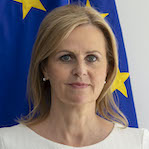
Turning waste into a resource
Europe is on a journey towards a circular economy. The road isn’t straight, the destination sometimes seems far away and the situation in Ukraine has given another level of urgency to this journey. With the EU Circular Economy Action Plans we have the maps we need, but every now and then, those maps need an update. That’s why the Commission adopted a new action plan in March 2020 which provides renewed guidance on the overall direction as well as detailed instructions about how to navigate the roads ahead. After the adoption of an Ecodesign for Sustainable Products Regulation and the EU Strategy on sustainable and circular textiles, a new set of initiatives focusing on packaging and green claims is now being finalised, and will arrive towards the end of 2022.
Across the EU, awareness of the need for a more circular economy is constantly on the rise. Citizens understand that if we continue to consume resources at the current rate, we would consume the equivalent of three planet earths every year by the middle of the century. And when material consumption rises, waste generation increases in step.
Half of all global greenhouse gas emissions already come from the extraction and processing of natural resources. The only viable solution is a coordinated shift away from the traditional linear model, where we take, make, use and dispose, to the more logical, more circular, regenerative model of growth.
This journey is now well under way as the remarkably high recycling rates of aluminium demonstrate the economic benefits for manufacturers are immense, with recycled aluminium requiring only 5 percent of the energy required to refine the metal from raw materials. Yet, the recycling of some other resources is lagging far behind. Packaging waste is a case in point. The sector has a huge impact on the environment. It is one of the main users of virgin materials – 40% of plastics, and 50% of paper used in the EU is destined for packaging – but also one of the main sources of waste, accounting for 36% of municipal solid waste.
With the Covid 19 pandemic, Europeans’ awareness of packaging waste made a leap. In response to the rising awareness, the Commission revises the Directive on Packaging and Packaging Waste. In 2019, before the pandemic, the average European was generating almost 180 kilos of packaging waste every year. One estimate from the impact assessment we prepared when reviewing the existing legislation shows that the volume of plastic waste generated could increase by nearly 50% by 2030 and 86% by 2040, compared to 2018.
These trends cannot continue, and even though most recycling rates are improving, waste continues to grow faster than recycling capacity. A focus on recycling alone will no longer suffice. For that reason, the revisions we propose cover all aspects of packaging and packaging waste.
The topline objective is preventing waste before it is generated, and finding ways to ensure that far greater quantities of packaging are actually reused. Since 2018, the EU has had the objective of ensuring that all packaging on the EU market is either reusable or recyclable in an economically viable manner by the end of this decade. The reworked legislation will make that easier, addressing the barriers that are holding back the process, including design features that currently inhibit recycling. Additionally, concrete targets for packaging waste prevention, and for specific products and packaging groups are considered. Many stakeholders are in favour of such mandatory targets, which would mean added security for industry investment, while also guaranteeing uniform implementation at the EU level.
In the past, the sector has suffered from the absence of an agreed definition of what constitutes recyclable packaging. Under the new legislation a ‘design for recycling’ approach is taken and a process to assess recyclability proposed, with the aim to setting EU-wide criteria for packaging design.
What we propose is an extensive review, covering everything from minimum inclusion rates for recycled plastic to harmonised labelling for consumer sorting. None of the details are final yet, but Europe is hungry for change, and I am confident that the new legislation will continue the much-needed evolution of this crucial sector.
EU laws have been driving improvements in waste management for five decades now, often powered by structural funds. But as the economy changes, these laws need to adapt, in line with the thinking behind the circular economy, and the realities of our new digital age. This revision of the packaging legislation follows the recast of the Batteries Directive, which is now in the final stages of co-decision, and will soon be transforming the industrial landscape.
The journey to the circular economy continues.




